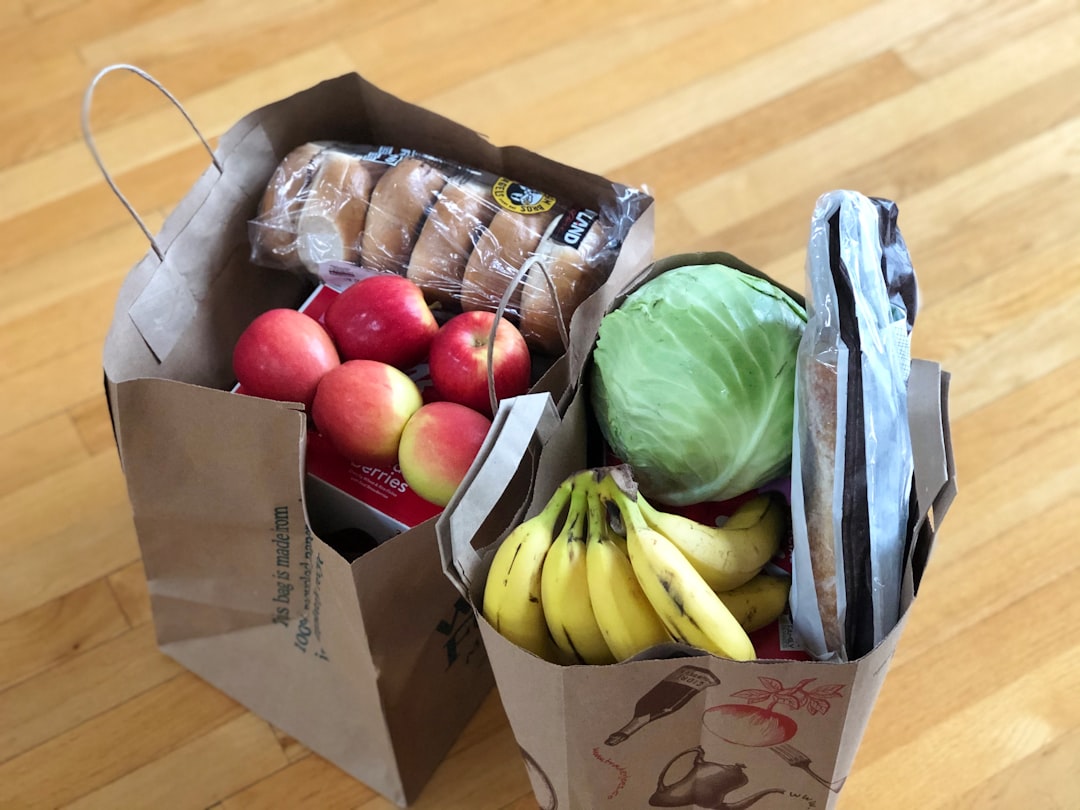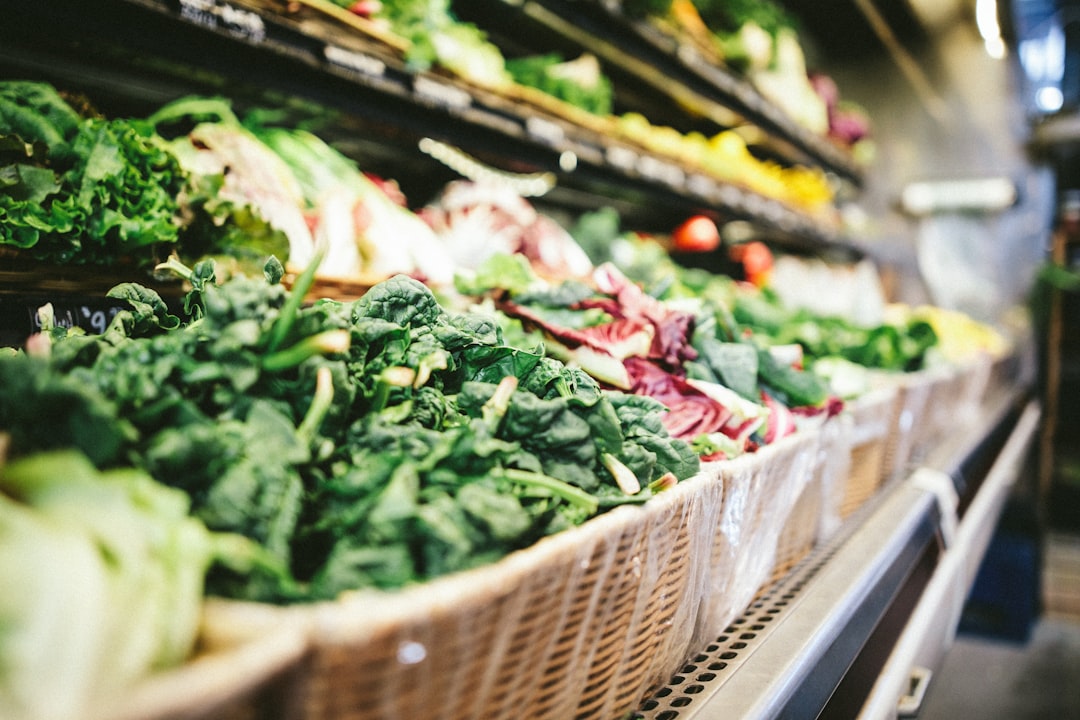Welcome to our blog post on how to save money on groceries! In today’s fast-paced world, it can be challenging to stick to a budget while also ensuring that our meals are nutritious and delicious. However, with a little planning and some smart shopping techniques, you can significantly reduce your grocery expenses without compromising on the quality of your meals.
In this blog post, we will walk you through seven practical strategies to help you save money on groceries. From planning meals and creating a grocery list to utilizing leftovers and meal prepping, we’ve got you covered. So, let’s dive right in and discover how you can make the most of your grocery budget!
Plan Meals and Create a Grocery List
One of the most effective ways to save money on groceries is to plan your meals in advance and create a detailed grocery list. This simple yet powerful strategy can help you avoid impulse purchases, reduce food waste, and ensure that you have everything you need to prepare nutritious and delicious meals throughout the week.
Start by taking some time to plan your meals for the upcoming week. Consider your dietary preferences, any special dietary requirements, and the ingredients you already have on hand. This will help you come up with a variety of meals that are both satisfying and cost-effective.
Once you have your meal plan in place, it’s time to create a grocery list. Take a look at each recipe and write down all the ingredients you’ll need. Be sure to check your pantry and fridge to see if you already have any of the items on hand. This will prevent you from buying unnecessary duplicates.
When creating your grocery list, it’s important to be specific. Instead of simply writing “vegetables,” list out the specific types of vegetables you need, such as broccoli, carrots, and bell peppers. This level of detail will help you stay organized while shopping and ensure that you don’t forget any essential items.
Additionally, consider the quantities of each item you’ll need. If a recipe calls for a small amount of an ingredient, you might be able to buy it in bulk and use it for multiple meals. This can be a cost-effective way to stock up on staple items and reduce the overall cost of your grocery bill.
Another tip is to take advantage of seasonal produce. Fruits and vegetables that are in season tend to be more affordable and of higher quality. Incorporating seasonal ingredients into your meal plan can help you save money while enjoying fresh and flavorful meals.
Once you have your meal plan and grocery list ready, it’s time to head to the store. Stick to your list and avoid impulse purchases. It can be tempting to grab items that are not on your list, but this can quickly add up and derail your budgeting efforts.
By planning your meals and creating a detailed grocery list, you’ll not only save money but also streamline your shopping experience. You’ll have a clear plan of what to buy, which will prevent you from aimlessly wandering the aisles and picking up unnecessary items.
Overall, taking the time to plan your meals and create a grocery list is a crucial step in saving money on groceries. It allows you to be intentional with your purchases, avoid wastage, and ensure that you have everything you need to prepare healthy and cost-effective meals. So grab a pen and paper, start meal planning, and watch your savings grow!
It can be tempting to grab items that are not on your list, but this can quickly add up and derail your budgeting efforts.
Shop with a Budget and Stick to It
When it comes to grocery shopping, it’s easy to get carried away and overspend. However, by shopping with a budget and sticking to it, you can save a significant amount of money while still getting everything you need. Here are some tips to help you shop with a budget and make the most of your grocery trips:
1. Set a Realistic Budget
The first step in shopping with a budget is to determine how much you can afford to spend on groceries each week or month. Take into account your income, expenses, and any financial goals you may have. Setting a realistic budget will help you prioritize your purchases and avoid unnecessary expenses.
2. Plan Your Meals in Advance
Before heading to the grocery store, take some time to plan your meals for the week. This will not only help you stay organized but also ensure that you buy only what you need. By knowing exactly what you’ll be cooking, you can avoid impulse purchases and reduce food waste.
3. Make a Grocery List
Creating a detailed grocery list is essential for sticking to your budget. Write down all the ingredients you’ll need for your planned meals, as well as any other essentials. Stick to your list while shopping and resist the temptation to add unnecessary items to your cart.
4. Compare Prices and Look for Deals
Before making a purchase, compare prices of different brands and products. Look for sales, discounts, and promotions that can help you save money. Many stores offer loyalty programs or digital coupons that can further reduce your grocery bill. Take advantage of these opportunities to maximize your savings.
5. Avoid Impulse Buys
One of the biggest challenges when shopping on a budget is avoiding impulse buys. Retailers are experts at enticing you with tempting displays and special offers. Stay focused on your list and resist the urge to deviate from it. Remember, every unplanned purchase adds up and can quickly derail your budget.
6. Consider Buying in Bulk
Buying in bulk can be a cost-effective strategy, especially for non-perishable items or those you use frequently. Look for bulk options for staples like rice, pasta, canned goods, and cleaning supplies. Just be sure to compare unit prices to ensure you’re getting the best deal.
7. Shop at Discount Stores or Warehouse Clubs
Consider shopping at discount stores or warehouse clubs to find great deals on groceries. These stores often offer lower prices compared to traditional supermarkets. While the selection may be more limited, you can still find a wide variety of products at a fraction of the cost.
By shopping with a budget and sticking to it, you can take control of your grocery expenses and save money in the long run. With careful planning, comparison shopping, and avoiding impulse buys, you’ll be able to make the most of your grocery trips while staying within your financial means.
By knowing exactly what you’ll be cooking, you can avoid impulse purchases and reduce food waste.
4. Buy in Bulk and Take Advantage of Sales and Discounts
One of the most effective ways to save money on groceries is to buy in bulk and take advantage of sales and discounts. By purchasing items in larger quantities, you can often secure a lower price per unit, resulting in significant savings over time. Additionally, keeping an eye out for sales and discounts can help you further reduce your grocery expenses.
When it comes to buying in bulk, it’s important to consider the items that you frequently use and have a longer shelf life. Staples such as rice, pasta, canned goods, and frozen vegetables are excellent options for bulk purchases. These items can be stored for extended periods without spoiling, allowing you to stock up and save money in the long run.
Before making a bulk purchase, it’s essential to compare prices and do some research. Look for warehouse clubs or online retailers that offer competitive prices on bulk items. Keep in mind that while the upfront cost may be higher when buying in bulk, the overall cost per unit will be significantly lower, resulting in substantial savings over time.
In addition to buying in bulk, taking advantage of sales and discounts is another effective strategy for saving money on groceries. Keep an eye out for weekly flyers, online promotions, and coupon offers from your local grocery stores. Planning your meals around these sales and discounts can help you maximize your savings.
When shopping for groceries, it’s crucial to have a flexible mindset. If a particular item you regularly use is on sale, consider buying it in bulk, even if it wasn’t initially on your shopping list. By taking advantage of these sales and discounts, you can stock up on essential items at a lower cost, ultimately reducing your grocery expenses.
Furthermore, don’t overlook the benefits of loyalty programs and rewards offered by grocery stores. Many retailers offer loyalty cards or apps that provide exclusive discounts and rewards for frequent shoppers. Take advantage of these programs to maximize your savings and earn additional perks.
By incorporating bulk purchases and taking advantage of sales and discounts into your grocery shopping routine, you can significantly reduce your overall expenses. Not only will you save money, but you will also have a well-stocked pantry and refrigerator, ensuring you always have essential items on hand. With careful planning and a bit of research, you can become a savvy shopper and make the most of your grocery budget.
When shopping for groceries, it’s crucial to have a flexible mindset.
5. Opt for Generic or Store Brands
When it comes to grocery shopping, one of the most effective ways to save money is by opting for generic or store brands. These products are often just as good as their name-brand counterparts but come at a fraction of the price. While some people may have reservations about buying generic products, it’s important to understand that many of these items are produced in the same facilities as their brand-name counterparts and undergo the same quality control processes.
Generic or store brands offer a wide range of products, including pantry staples, cleaning supplies, personal care items, and even fresh produce. By choosing these alternatives, you can significantly reduce your grocery bill without sacrificing quality. In fact, many people find that they can’t even taste a difference between generic and brand-name products.
One strategy to consider is to start by replacing a few of your most frequently purchased items with generic versions. This will allow you to test the quality and see if you notice any difference. You may be pleasantly surprised to find that the generic version is just as good, if not better, than the brand-name product you were previously purchasing.
Another advantage of opting for generic or store brands is the wider variety of options available. While brand-name products may have a limited selection, generic brands often offer a greater range of choices. This can be particularly beneficial if you have specific dietary restrictions or preferences, as you may find more suitable options within the generic or store brand lineup.
Furthermore, generic or store brands often have simpler packaging and marketing, which helps to keep their costs down. By avoiding the expenses associated with fancy packaging and extensive advertising campaigns, these brands can pass on the savings to the consumer. This means that you can enjoy similar quality products at a lower price.
It’s important to note that not all generic or store brands are created equal. Some may not meet your expectations in terms of taste or quality. However, with a bit of trial and error, you can find the ones that work best for you and your family. Keep an open mind and be willing to experiment with different brands to discover the hidden gems that offer both affordability and high quality.
Opting for generic or store brands is a smart and practical way to save money on your grocery bill. These products often provide the same quality as brand-name items but at a significantly lower cost. By giving them a try and being open to new options, you can enjoy a wide variety of affordable and high-quality products while staying within your budget.
This means that you can enjoy similar quality products at a lower price.
Utilize Leftovers and Meal Prep
One of the most effective ways to save time and money in the kitchen is by utilizing leftovers and incorporating meal prep into your routine. By strategically planning your meals and making use of leftovers, you can minimize food waste and ensure that every ingredient is put to good use. Additionally, meal prepping allows you to have ready-to-eat meals or prepped ingredients on hand, making it easier to stick to your meal plan and resist the temptation of ordering takeout.
When it comes to utilizing leftovers, the key is to think creatively and repurpose them into new and exciting dishes. For example, if you have leftover roasted chicken, you can shred it and use it in tacos, salads, or sandwiches the next day. Leftover vegetables can be transformed into a hearty soup or added to a frittata for a quick and nutritious breakfast.
Meal prepping involves dedicating a specific time each week to prepare and portion out meals or ingredients for the upcoming days. This can range from chopping vegetables and marinating proteins to cooking entire meals in advance. Not only does this save time during busy weekdays, but it also helps you stay on track with your budget and healthy eating goals.
Start by planning your meals for the week and identifying which ones can be prepped in advance. For example, if you plan on making a stir-fry, you can chop all the vegetables and marinate the protein ahead of time. This way, when it’s time to cook, all you need to do is assemble the ingredients and stir-fry them in a matter of minutes.
Invest in airtight containers and portion out your prepped ingredients or meals into individual servings. This makes it easy to grab and go, whether you’re packing lunch for work or need a quick dinner after a long day. By having prepped meals readily available, you’re less likely to rely on expensive and unhealthy takeout options.
Not only does meal prepping save you time and money, but it also encourages healthier eating habits. When you have nutritious meals and snacks readily available, you’re less likely to reach for processed and unhealthy convenience foods. Additionally, by portioning out your meals in advance, you have better control over your portion sizes, helping you maintain a balanced diet.
Incorporating leftovers and meal prep into your routine may require some initial planning and effort, but the benefits far outweigh the extra work. Not only will you save money by making the most of your ingredients, but you’ll also save time and stress during busy weekdays. So, take advantage of those leftovers and start meal prepping – your wallet and your waistline will thank you!
For example, if you plan on making a stir-fry, you can chop all the vegetables and marinate the protein ahead of time.
Conclusion
In conclusion, implementing these strategies can greatly help in saving money on groceries and staying within your budget. By planning your meals and creating a grocery list, you can avoid impulse purchases and ensure that you only buy what you need. Shopping with a budget and sticking to it is crucial in preventing overspending and keeping your expenses in check. Taking advantage of sales, discounts, and buying in bulk can lead to significant savings over time. Opting for generic or store brands can also help you save money without compromising on quality.
Additionally, utilizing leftovers and meal prepping can not only save you money but also time and effort. By repurposing leftover ingredients or meals, you can minimize food waste and stretch your grocery budget further. Meal prepping allows you to plan and prepare meals in advance, reducing the need for expensive takeout or dining out.
Remember, saving money on groceries requires discipline, organization, and a willingness to make some adjustments to your shopping habits. It may take some time to get into the habit of implementing these strategies, but the long-term benefits are well worth it. By being mindful of your spending and making smart choices at the grocery store, you can achieve significant savings and still enjoy delicious and nutritious meals.
So, the next time you head to the grocery store, keep these tips in mind and watch your savings grow. With a little planning and conscious decision-making, you can become a savvy grocery shopper and take control of your food expenses. Happy shopping!





